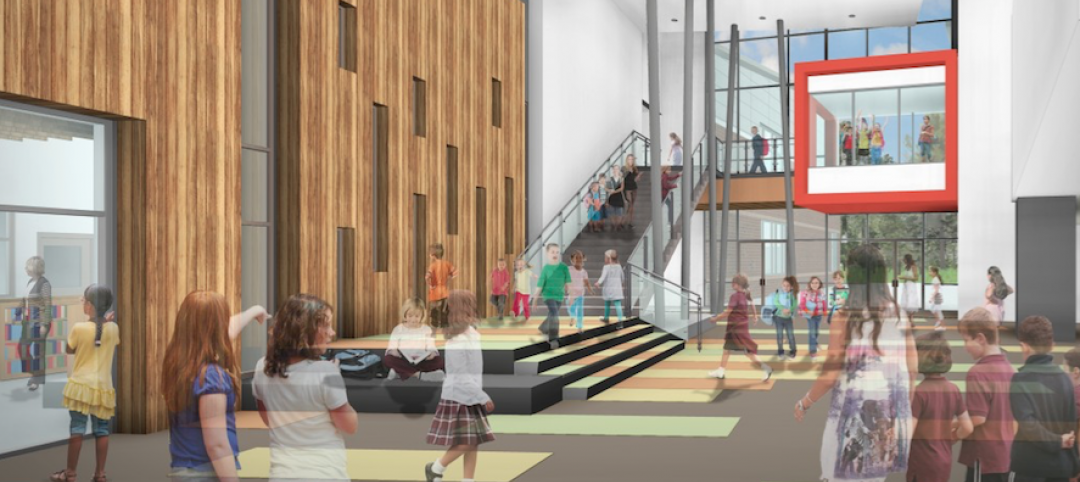The National Council of Architectural Registration Boards (NCARB) Board of Directors has announced their endorsement of the concept of an additional, structured path that leads to licensure in a U.S. jurisdiction.
The new path—licensure upon graduation from an accredited program—would integrate the rigorous internship and examination requirements that aspiring architects must fulfill into the years spent completing a professional degree in architecture.
The concept was designed by a distinguished group of volunteers convened by NCARB, which recommends national architect registration standards, called the Licensure Task Force.
This group, which was initially formed in mid-2013, is headed by NCARB’s Immediate Past President Ron Blitch of Louisiana, and it includes former and current leaders of NCARB, by the National Architectural Accrediting Board (NAAB), the American Institute of Architects (AIA), the Association of Colleges and Schools of Architecture (ACSA), and the American Institute of Architecture Students (AIAS), as well as interns, recently licensed architects, program deans and instructors, and jurisdictional licensing board representatives.
A Progressive Path
Describing the work of the Licensure Task Force, NCARB CEO Michael Armstrong said, “NCARB is engaged in streamlining and simplifying the licensing process for aspiring architects, and we are actively re-engineering all elements of the architectural licensing process—education, experience and examination—to focus on facilitation of licensing.”
“This additional path to licensure is another concrete step to reimagining and reconfiguring each part of the process while upholding the rigorous standards needed to protect the public’s health, safety and welfare,” he said.
This progressive concept was borne of research and development efforts by the Licensure Task Force, with leaders from diverse segments of the architectural community to analyze each component of the licensure process to identify overlaps and redundancies to existing programs.
Now beginning the second year, the Licensure Task Force will start to identify schools interested in participating in the program. NCARB expects to issue schools Requests for Information later in the year, followed by a Request for Proposal process in 2015.
Exam Evolution
In addition to the licensure work, NCARB also announced this month that a transition plan is underway to guide the implementation of major improvements and changes to the Architect Registration Examination® (ARE®), the test that all prospective architects must take to get their licenses. The new ARE 5.0 will launch in late 2016, while ARE 4.0 will remain available for at least 18 months after the launch.
The exam is required by all U.S. states, the District of Columbia, Guam, Puerto Rico, and the U.S. Virgin Islands for initial architectural licensure by assessing candidates for their knowledge, skills, and ability to provide all services required in the practice of architecture.
About NCARB
The National Council of Architectural Registration Boards’ membership is made up of the architectural registration boards of all 50 states as well as those of the District of Columbia, Puerto Rico, Guam, and the U.S. Virgin Islands. NCARB assists its member registration boards in carrying out their duties and provides a certification program for individual architects.
NCARB protects the public health, safety, and welfare by leading the regulation of the practice of architecture through the development and application of standards for licensure and credentialing of architects. In order to achieve these goals, the Council develops and recommends standards to be required of an applicant for architectural registration; develops and recommends standards regulating the practice of architecture; provides to Member Boards a process for certifying the qualifications of an architect for registration; and represents the interests of Member Boards before public and private agencies. NCARB has established reciprocal registration for architects in the United States and Canada.
Related Stories
Healthcare Facilities | Feb 1, 2018
Early supplier engagement provides exceptional project outcomes
Efficient supply chains enable companies to be more competitive in the marketplace.
Industry Research | Jan 30, 2018
AIA’s Kermit Baker: Five signs of an impending upturn in construction spending
Tax reform implications and rebuilding from natural disasters are among the reasons AIA’s Chief Economist is optimistic for 2018 and 2019.
Market Data | Jan 30, 2018
AIA Consensus Forecast: 4.0% growth for nonresidential construction spending in 2018
The commercial office and retail sectors will lead the way in 2018, with a strong bounce back for education and healthcare.
Architects | Jan 29, 2018
14 marketing resolutions AEC firms should make in 2018
As we close out the first month of the New Year, AEC firms have made (and are still making) plans for where and how to spend their marketing time and budgets in 2018.
Education Facilities | Jan 29, 2018
My day as a kindergartner
The idea of a kindergarten-only school presents both challenges and opportunities in regards to the design.
AEC Tech | Jan 29, 2018
thyssenkrupp tests self-driving robot for ‘last mile’ delivery of elevator parts
“With driverless delivery robots, we could fill a gap and get spare parts from our warehouses to the jobsite faster,” said thyssenkrupp SVP Ivo Siebers.
Architects | Jan 26, 2018
Stephen Ayers, FAIA, honored with the 2018 AIA Thomas Jefferson Award
The award honors significant contributions to public architecture.
Architects | Jan 26, 2018
Recipients for the 2018 Collaborative Achievement Award selected
The recipients will be honored at the AIA Conference on Architecture 2018 in New York City.
K-12 Schools | Jan 25, 2018
Cost estimating for K-12 school projects: An invaluable tool for budget management
Clients want to be able to track costs at every stage of a project, and cost estimates (current and life cycle) are valuable planning and design tools, writes LS3P's Ginny Magrath, AIA.
Architects | Jan 25, 2018
Four keys to designing autistic-friendly spaces
Autism, in part, gave us modern architecture, writes PDR’s Julie Troung.
















